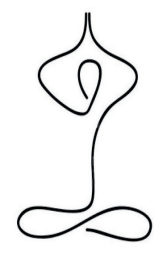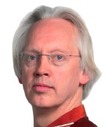Marcel van Marrewijk's Blog, page 135
February 7, 2017
A co-created logo story
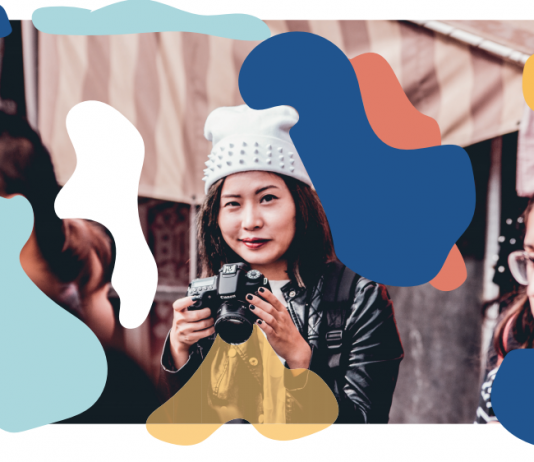
You might have or might have not noticed that there are some changing going on in the serendipity machine. Now we have a new website, our own blog and ta-dah! A new logo! We would like to share with you the story of our logo, once we think it’s a very nice one! We started like this.

This logo I don’t really know the story, and although it is nice we decided we needed a little change for the times to come. We want to share the process with you. We started with a lot of references. Like a LOT. We first liked that image where 2 lines that doesn’t look like anything when put together form a totally new thing! That’s what serendipity it’s all about.
At the same time serendipity is something that never repeats itself. One encounter is always different from the other and you never know what you can expect from it. That’s when the spots idea came! The spots behind the “S” from Serendipity are never the same! So don’t get attached.
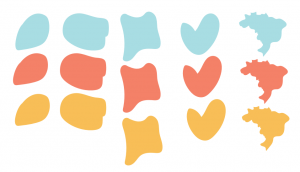
We came up with a few different options of the S and that’s when things really got a lot of fun! Instead of deciding which one it would be inside our 8 people team, we decided to open up on facebook for everyone!
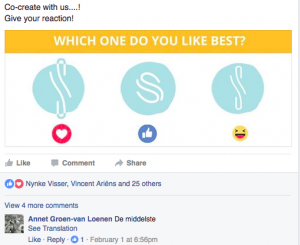
And even though it was a tough race, we have our winner! Meet the new serendipity machine logo!

The post A co-created logo story appeared first on Seats2meet.
February 6, 2017
Living the location-independent-lifestyle
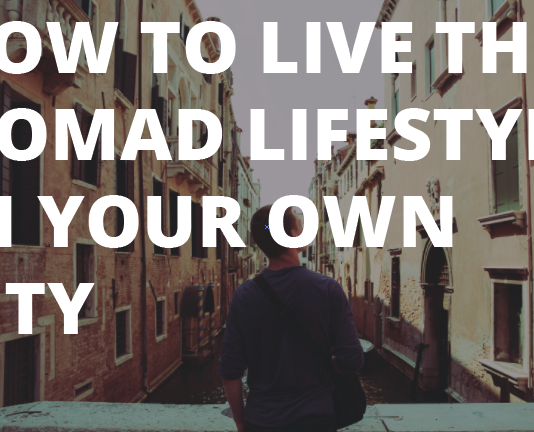
What is it with this holiday feeling we all want to grab so desperately and don’t want to lose it during the whole year? Especially during those dark, cold days we (or am I just talking alone?) are looking sooooo forward to the spring coming through.
But did you know that not only the weather is giving you a holiday feeling. Once, I read a research about the magic feeling we have during holidays. It turned out, it has nothing to do with the sun! It’s about your daily routine. On holiday you are changing this daily routine massively. You meet new people, you discover new places, you try new things; you go on an adventure!
So. Why not living this lifestyle during your daily life?
How?
Just by changing a few things…
1. Try a different breakfast (every morning)
2. Bring your work to different locations
3. Meet new people (every day)
4. Co-create with different disciplines
5. Be more outside
6. Do less stuff, and feel productive doing 1 big task a day
7. Chill out
8. Listen to different music (try this amazing playlist)
Which platforms will help you living this lifestyle?
Thuisafgehaald.nl; To try different, local food and share your own food as well
Seats2meet for Locals; To work at different and cool places
Coolworkspaces; To find even more spaces to work & meet (also international)
Airbnb & Couchsurfing; To sleep at different places
Coliving places; live & work together
Seats2meet for Silence; Work in nature and sleep at unique spots
Snappcar; To drive in an amazing new vehicle
5 City’s you can go to, to work at cool places:
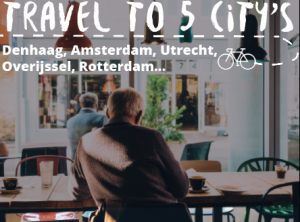
Rotterdam
S2M for Locals: Daaro Rotterdam
Amsterdam
S2M for locals: House with a view
Utrecht
S2M for Locals: On top of Utrecht
Overijssel
S2M for Locals: De vrijheid van de keukentafel
Denhaag
S2M for Locals: Koedie
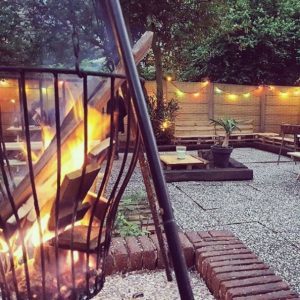
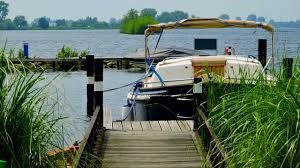
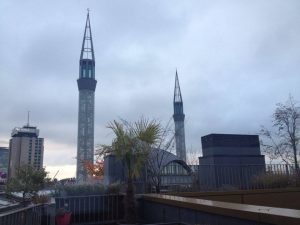
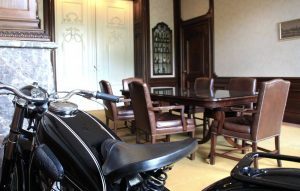
Pictures taken at S2M for Locals locations (how cool!).
So, what are you waiting for? I am packing my backpack to get on this adventure.
Let’s go! Freedom has been there waiting for you! (It’s all about our mindset)
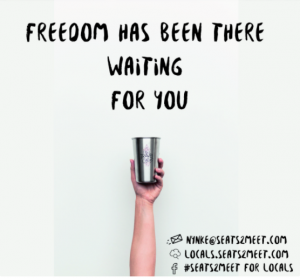
The post Living the location-independent-lifestyle appeared first on Seats2meet.
The Dutch Sharing Economy Landscape
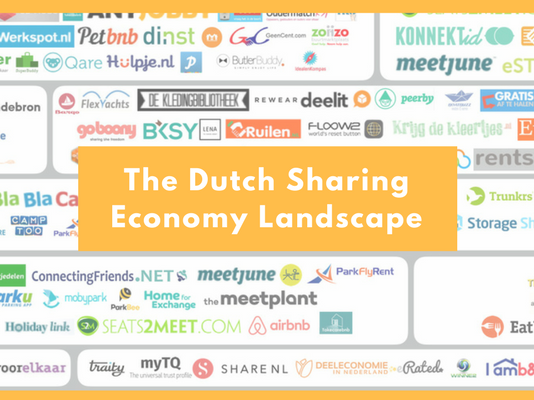
The sharing economy is growing. When looking at the number of sharing economy platforms active on the Dutch market, the counter surpasses the 100-mark easily. To provide customers a clear market overview, I launched the Dutch platform ‘Sharing Economy in the Netherlands‘ in 2016. Meanwhile, almost all platforms active in the Netherlands do have a profile.
However all platforms were represented with a profile on our site, a clear overview in terms of an infographic still lacked. To provide a proper impression of the sharing economy market in the Netherlands, I launched the infographic bellow, showing all platforms divided in 10 categories, today. Everything as clear as possible.

Question of definition:
However the sharing economy is the most frequently used name for this development, I also see a rise in the the terms ‘collaborative economy’ and ‘(peer2peer) platform economy’. The core of these developments is that individuals find each other through platforms in order to make transactions. In this infographic I’ll be using both sharing economy (things) and ‘gig economy’ (labour/tasks/services). To keep this infographic accessible for the reader, I decided to use sharing economy as an all encompassing term, knowing it might not be the ideal terminology, although it’s most recognizable.
The post The Dutch Sharing Economy Landscape appeared first on Seats2meet.
January 31, 2017
S2M Utrecht en Thuisafgehaald.nl starten pilot!

Aanstaande woensdag 1 februari start S2M Utrecht samen met Thuisafgehaald een leuke pilot! Thuisafgehaald.nl is een online platform waarop buurtgenoten maaltijden met elkaar delen. Misschien dat je er al wel eens over hebt gehoord, maar het nog nooit hebt gebruikt. Dan is dit je kans:
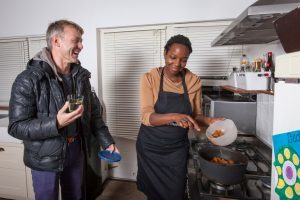 Ben je begin februari bij ons aan het werk? Dan zal Nynke een aantel keer bij je langslopen om je te vertellen welke ma
Ben je begin februari bij ons aan het werk? Dan zal Nynke een aantel keer bij je langslopen om je te vertellen welke ma
altijd je die avond kunt gaan afhalen bij een buurtgenoot in Utrecht. Heel handig want zo hoef je zelf niet meer te koken of kun je die snack van het station een keer overslaan.
Het enige wat jij vervolgens na werk nog hoeft te doen is op je fiets springen om die lekkere maaltijd af te halen.
We hopen dat er een culinaire wereld voor je opengaat!
The post S2M Utrecht en Thuisafgehaald.nl starten pilot! appeared first on Seats2meet.
January 30, 2017
Save the date: The Experience Economy masterclass by Joe Pine
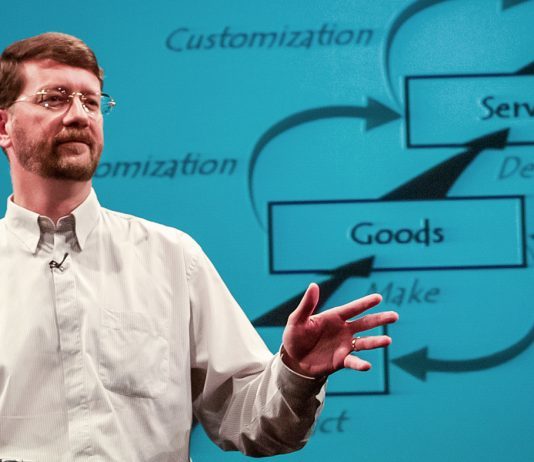
In March 31st in Seats2meet Utrecht Joe Pine, the autor of the best-sellers books “The Experience Economy”, “Authencity” and “Infinite Possibility”, will host a masterclass to talk about how retail companies can offer transformative experiences as a product and get more customers out of it. The challenge is how to be perceived as authentic. For a sneak peak you can check his TED Talk “What consumers want”.
In total there are 100 spots to participate in the masterclass. The cost per person is 349,-, if subscribed on a group of 3 the price is 299,- for each participant. The masterclass starts at 12h30 with lunch and at 13h30 with Joe Pine’s masterclass. At 17h30 will be a networking session for all the participants.
To register as a participant you can send an e-mail to broodenspelen@basconsultants.nl with your name and address.
The post Save the date: The Experience Economy masterclass by Joe Pine appeared first on Seats2meet.
Welke problemen lossen we op met werkplekken in de natuur?
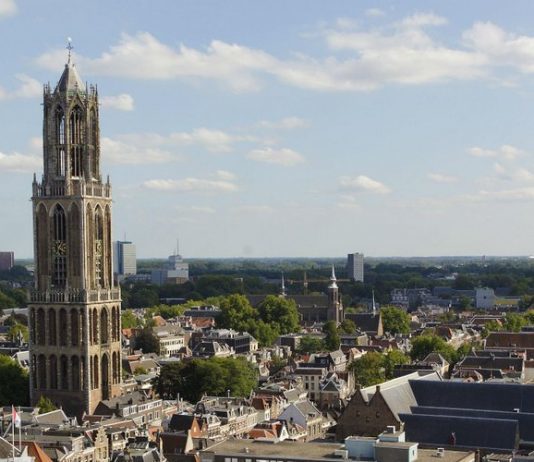
Welke problemen van werkend Utrecht – kunnen we oplossen met onze werkplekken in de natuur?
Deze vraag stelde ik in Utrechtse Uitdaging om het concept Seats4silence verder te brengen. Het gedachtegoed van werken in de natuur is niet plaatsgebonden. Concrete samenwerking wel. Vandaar deze verkenning naar lokale vragen in mijn eigen stadsie die we, met het netwerk in de Utrechtse ommelanden, mogelijk kunnen oplossen.
De Utrechtse Uitdaging is een bedrijvennetwerk voor ondersteuning van ondernemerschap van maatschappelijke stichtingen en verenigingen. Dankzij mijn oproep in het initiatieven café op de culturele zondag mag ik mijn vraag pitchen in hun matchgroep.
Wat is Seats4silence?
Seats4silence is een ondernemend netwerk van groene werk- en ontmoetingslocaties en zelfstandige professionals, die trainen, coachen ea activiteiten organiseren in het groen. Seats4silence is geïnitieerd om het ommeland ook onder werktijd te kunnen beleven als organische deel van de stad en onze buitengebieden daarmee een nieuwe impuls te geven. Het netwerk is onderdeel van het ecosysteem van Seats2meet.com
De matchgroep had 2 vragen voordat ze met suggesties kwamen.
Wat is nu het verdienmodel?
Seats4silence is nog in de pilotfase. Er gaat (nog) onvoldoende geld in om, om de onkosten te dekken. De idee is dat op basis van licenties, de ondernemers een klein deel van hun inkomsten afdragen tbv het platform. Er zijn veel kleine transacties nodig omdat rendabel te kunnen maken. Het is het belangrijk dat in het netwerk veel meer activiteit gaat ontstaan: netwerkeconomie.
Welk probleem los je op voor het ommeland?
De leefbaarheid van de ommelanden staat onder druk. Er is een trek naar de stad en een groeiend verschil tussen economie en kennis tussen stad en ommeland. Vergrijzing en bevolkingsdaling maakt dat er nieuwe activiteiten nodig zijn. Schaalvergroting van de landbouw maakt medegebruik minder aantrekkelijk. Een netwerkconcept verbinden aan de ommelanden is een opening om nieuwe kennis en activiteit juist buiten de (Rand)stad te organiseren.
Suggesties uit de matchgroep
Welke groepen hebben een specifieke urgentie die je kan koppelen aan werken en ontmoeten in de natuur?
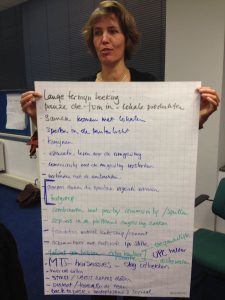 lange termijn boeking, dag of meer bv heisessies
lange termijn boeking, dag of meer bv heisessiesflexibele projectteams zonder eigen plek/ of slechtste plek in kantoor
back to basic: zelfvoorzienend stimuleert zelf oplossend vermogen en samenwerken
oppassen met vitaliteit gerelateerde doelgroepen – anderen zullen minder snel verbinden, uitwisseling is lastig als mensen overwerkt zijn
Verrassing: nog lokaler inzoomen
Ruben brengt in: “Bedrijven met “lelijk” kantoor op “gewoon” bedrijventerrein hebben vaak problemen met talentbinding. Talenten kiezen immers voor de leukste werkplek? Kun je rond een bedrijventerrein een aantal mooie groene locaties koppelen, die voor deze bedrijven als vaste flexplekken fungeren? Lekker buiten, exclusief voor focus of speciaal overleg en toch op max. 15 min fietsen vanaf hun eigen locatie?”
Zo lokaal had ik het nog niet bekeken. Inmiddels onderzoeken we met AAFM of we dit idee handen en voeten kunnen geven.
Hoe verder?
Het is duidelijk dat het concept werken in de natuur duidelijker vorm gegeven mag worden naar specifieke gebruikers. Dit jaar is een spannend jaar. Gaat het lukken Seats4silence tot een volwassen concept te laten uitgroeien?
20 februari as is de eerstvolgende strategiesessie. We presenteren de evaluatie aan de aanbod kant. Die middag onderzoeken we voor welke vragen uit de markt, ons netwerk een oplossing kan bieden.
Je bent van harte welkom om mee te creëren. Als potentiële klant, zelfstandig dienstverlener of aanbieder in het groen. We zijn een open netwerk dat al doende samen een concept ontwikkelt.
Je kan je hier opgeven voor de strategie sessie
op maandag 20 februari 2017 Meeting Plaza Utrecht.
Voorbereiden?
Hieronder kun je uitkomsten van vorige werksessies lezen.
Hoe kan ik effectief marktonderzoek doen? Lees meer>>
Uitkomsten Seats4silence Summit 1 juni 2016
Uitkomsten werksessie vraagkant voorjaar 2016
“Hoe kunnen we de kracht van het kleine behouden op de groene locaties van Seats4silence en tegelijkertijd opschalen?” Uitkomsten werksessie nov. 2015
The post Welke problemen lossen we op met werkplekken in de natuur? appeared first on Seats2meet.
A ROADMAP TO SOCIETY 3.0: MASTERCLASS TRENDS 2017 BY LIEKE AND RICHARD LAMB
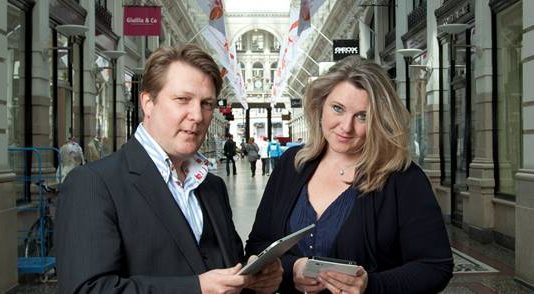
Dit voorjaar opent SIFUtrecht in het voormalig Staffhorst pand haar deuren. Als nieuwe bewoners van deze plek geven we de inwoners van Utrecht graag een cadeau. Dit doen we in de vorm van een serie van 6 masterclasses door toekomstexperts.
De 6 masterclasses worden gegeven door:
14 februari
Lieke & Richard Lamb – Trends 2017
28 februari
Erik Stam – De Toekomst van ondernemerschap in NL
14 maart
Herman Vissia – Hoe kan internet de toekomst voorspellen
28 maart
Lykle de Vries – Bitcoin / Blockchain
4 april
Fons Schoemakers – Collectieve Intelligentie
11 april
Marije Lutgendorff – Crowdfunding
Deze Masterclasses zijn gratis toegankelijk!
Op 14 februari vertellen Lieke & Richard Lamb ons alles over de te verwachten trends.
Trends 2017 door Lieke & Richard Lamb
Als Futuroloog / TrendWatcher spreken Lieke & Richard Lamb tijdens hun keynotes en TrendTalk-presentaties zowel over trends als over de manier waarop men zelf trends kan spotten en vertalen naar een toekomstbeeld met kansen en innovaties. Tijdens deze masterclass geven zij aan de hand van hun TrendsVerwachting 2017, een idee van wat we in 2017 kunnen verwachten.
Deze eerste serie masterclasses is samengesteld door Ronald van de Hoff, co-founder van Seats2Meet.com en schrijver van het boek Society 3.0.
Met deze serie biedt hij een complete roadmap voor de toekomst en genoeg stof om over na te praten met de experts en de andere toehoorders. Onderdeel van de masterclasses is dat we de bezoekers ‘matchen’ op basis van hun kennis met behulp van kunstmatige intelligentie en het publiek zo laten ervaren hoe wij in SIFUtrecht gaan zorgen dat de juiste mensen elkaar daar gaan ontmoeten, gaan samenwerken en daarmee een maatschappelijke bijdrage kunnen gaan leveren.
The post A ROADMAP TO SOCIETY 3.0: MASTERCLASS TRENDS 2017 BY LIEKE AND RICHARD LAMB appeared first on Seats2meet.
How Estonia became the most digital country in the world.
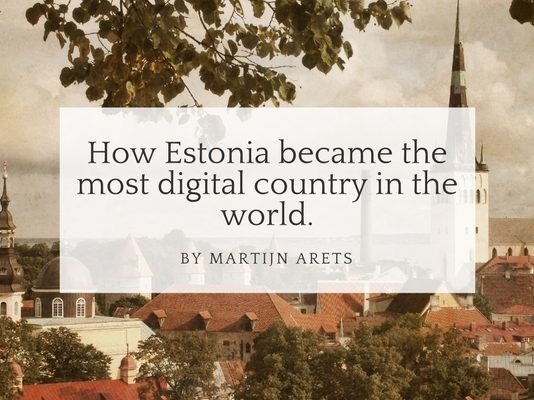
Agile processes, Minimal Viable Product, speeding up and embracing uncertainty. These are the words you mostly hear in IT-company’s offices, but this time they’re uttered by Estonian government officials. The government of Estonia is very digitally engaged and open. Late 2014 they made their country available for the rest of the world. The government wants to grant everyone on earth a digital identity and excess to the ICT-infrastructure of their country through project e-Residency.
ICT as USP
E-Estiona’s story starts with the collapse of the Soviet Union and its independence in 1991. At that time the country faces two challenges. Firstly, the leadership of the country, with just over one million inhabitants, recognizes their obscurity. This makes their state vulnerable. To become known, the country has to stand out. To use marketing terms: Estonia needs a Unique Selling Point (USP).
The second challenge is the establishment of a whole new governmental apparatus for relatively small number of in inhabitants. A traditional approach would be unaffordable for the government. There must be another way to organize this.
The answer to both questions became: ICT.
A clean slate
However budgets are limited, the Estonians do have one great advantage: they can start with a clean slate. So, the government is building a basic platform on which al ICT-infrastructure might be connected. Data for a new ICT-project will be retrieved from this source which prevents for duplications. Inhabitants receive an ID-card with a chip which, in combinations with a pin code and an USB-reader, forms the digital identity of the inhabitant. Once logged into the system the inhabitant has access to all his data. And he is able to see who has seen his data. The majority of violations of e.g. curious doctors or officials will be discovered by the inhabitants themselves.
Thanks to this approach, 97% of all schools are online in 1997 and the government has constructed a free WiFi network in all inhabited areas in 2002. Since 2007, it is possible to vote digitally, and by 2017 the average Estonian takes only three minutes to complete his tax declarations. That 71% of Estonia’s GDP originates from services might have to do with it. All this is facilitated by the safest, privacy friendliest system ever build by a government.
All this has put Estonia high on several international lists:
1st in ‘International Tax Competitiveness Index’
2nd in Internet Freedom (Freedom House 2015)
8th in ‘Index of Economic Freedom 2015’ (Wall Street Journal/The Heritage Foundation)
16th in ‘Ease of Doing Business Report 2016’ (World Bank)
No paperwork
E-Residency Managing Director, Kaspar Korjus: “In digitalization, most often you find processes being digital, though finally something has to be signed on paper. Not here, as even new laws have to be signed digitally. I can’t remember myself going into a voting booth anymore, everything here works digitally.”
That the approach is bringing forth its fruit is described by journalist Jeremy Epstein and Shai Franklin in their article ‘How Estonia can save Western civilisation’: “The investment in infrastructure has not only reduced government expenditures by the equivalent of 2 percent of gross domestic product (GDP) (500 million dollar), it has also given rise to one of the world’s most entrepreneurial and innovative countries, with the second-largest number of startups per capita.
Thinking outside borders
In December 2014, an idea is launched by the ‘governmental startup project’, which states that not only Estonian inhabitants, but everyone in the world, may use the country’s infrastructure. The literal goal is to give every person on earth a digital identity. The advantage for Estonia is that the country becomes well-known and it stimulates the economy.
Korjus tells how that project is handled: “We like to keep things simple and do not directly think in terms of end products. For the idea of e-Residency we created a page on Launchbase: a platform to share your idea briefly and where people can subscribe to be kept up to date. When the managing director woke up the next morning, 4.000 persons from 150 countries had already subscribed. It was beyond doubt, we had to continue with this plan.”
“We developed the idea, and build a Minimal Viable Product. Therefore we had to change some laws. By working with a dedicated team ánd with the support of the government it worked to set out with this plan within a few months. None of this would have been possible without a total commitment to technology and innovation by both the public and private sectors in Estonia.”
e-Residency
Through the website, every non-Estonian of 18 years and above can request an e-Residency. Against the cost of 100 Euro, you are able to pick up your card an code from over 200 locations worldwide. The Physical contact moment (don’t forget your passport!) is the moment the link between your physical and digital identity is made.
With your card and pin code you’re granted access to Estonia’s user interface and you’ll receive a digital authorization tool. Besides this, anyone on earth can acquire access to European payment providers. And you may, wherever you are on the world, start your company digitally. Korjus: “The e-Residency could give financial and technological inclusion to 73 percent of world’s population excluded from financial tools.”
Jeremy Epstein and Shai Franklin: “With e-Residency individuals can start their own company within the European Union within 24 hours, open an European bank account, and subscribe digital documents to be accepted within Europe and beyond.”
New projects come with setting goals. At the start of the e-Residency project the team set themselves the goal to reach 10 million e-Estonians in 2020. Korjus states it is not a ‘mandatory goal’ though. He tells over 17.000 e-Residents are registered, who together started over 2.000 companies. “In comparison: In Estonia are 30.000 companies listed. So even this is a huge number for our country”.
Growth by facilitating others through APIs
“However our speed, as government, is above average, we do understand very well that we’re always 10 times slower than the market,” tells Korjus. “With cases like the payment provider and digital identity we now cover 80 percent of the inhabitants needs. For the remaining 20% we’re building APIs in which others can create their own solutions. We currently offer two APIs. One can be used to integrate the ID card with a website to offer secure login and user authentication. The other is a more niche API that can be used by business service providers to register companies for e-residents in the Estonian business register.”
Positive side effects
The population is proud. “Technology is almost seen as a religion here,” says Korjus. “In case you would ask an Estonian where he is from, he’ll answer: from the country that created Skype and Transferwise.”
The great international attention in the media about the e-Residency project definitely contributes to this pride and Estonia’s profile as important ICT-nation. Something on which marketing smartly utilizes. E.g. they invited the Britons after the outcome of the Brexit referendum to remain digital Europeans.
Lessons learned and future
Kaspar: “Whenever you try to disrupt the status quo, in this case questioning the traditional notion of residency and citizenship, you run into problems. We have learned to be patient and to work through the big problems as they come, one at a time. Although our team is backed by the government, we approach our work with a lean startup mindset.”
“A study conducted by the American company Intuit suggests that there will be over 100 million new online workers by 2025. Through e-Residency, countries like Estonia will be in a position to attract people like this by becoming the best place to run a location independent business in the world. We think that countries will soon be competing for citizens, residents, and e-residents just like private companies compete for customers now.”
Conclusion
In a time that governments attribute more value to country borders than to entrepreneurs, I think Estonia has taken a unique and promising road. By making clear choices, facilitating others, and by simple doing, they achieved impressive results in a relatively short period. Will e-Residence be a success? I do give them a chance and just requested my e-Residency. Simply, because it is a beautiful project to be part of.
Food4thought: Country as a service?
April 1st, 2016, Estonia jokingly launched the website ‘ Country OS ’, where countries may get a ‘country as a service’ subscription. Maybe this sounds crazy, but when you read Ben Hammersley’s quote in this article in Wired, he might provoke you somehow: “In other words, a nation is now competing with its neighbours on the basis of the quality of its user interface. Just as you might switch your bank to one with a better mobile app, the Estonians hope you’ll switch your business to a country with an infrastructure that is easier to use.”
This blog was published in Dutch on Intrapreneur.nl
The post How Estonia became the most digital country in the world. appeared first on Seats2meet.
January 27, 2017
Entering the Age of Psychological Warfare
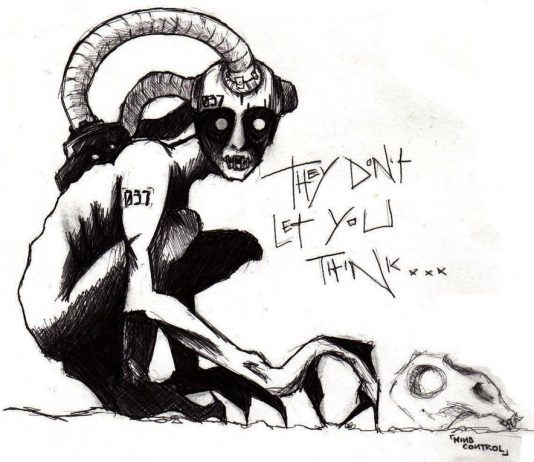
This morning I came across an article that left me quite horrified. It also spurred a lot of questions. The article in question was about how your online data can be used to build an accurate psychological profile of you … and how that profile can be used to target you, as an individual with political propaganda. The company providing this service is Cambridge Analitica.
First they were working for Ted Cruz and managed to propel him from a mere blip in the primaries to the only real threat to Trump. Here’s how they did it …
But then The Donald himself hired them. Armed with about 5000 pieces of data per American they can create fairly accurate psychological profiles of everyone living in the US. And probably of about everyone they can get data of.
https://d17uoaaed42daq.cloudfront.net/cavideos/CA+Election.mp4
Their tools can be considered as an actual weapon when deployed in these settings. Mass manipulating your electorate with individually targeted messages in order to get a candidate in is comparable with guerilla warfare on a psychological level. Cheaper, less risky and more successful.
This brings up a lot of moral questions. Can we allow this? If not, is there anything we can do against it? Do we need to fight back with the same weapons? Would that be moral?
The problem is the following: we are all influenceable. If you are sure it won’t happen to you then you’re probably an easy victim. Now that knowledge can be used for something positive, like for example getting people to buy more vegetables. Or it can be used to push the political agenda of a megalomaniac narcissist.
The conundrum of the ‘good’ people
One problem that the ‘good’ people often have is that they want to play fair. Now I’m not saying that’s a bad thing. I am all for fair play. But when faced with something like this you just have to wander: is fair play a viable strategy? If we want to create a world where people can live in harmony with each other and where sustainable production and care for the planet become a norm, do we need to change strategies? It is already a known fact that providing people with accurate data does not help to sway opinions. We need something different. Would it be possible to use this tool in a moral way? Or can we create something just as powerful that is moral to use? And if we decide to use this, who makes sure we stay on a moral path? And which morality will that be? What is the price we pay if we refuse to use these same techniques for the benefit of our society?
One thing I do know is this: we are all influenced all the time. The environment we are in influences our behaviour, who we talk to influences our behaviour, what we watch influences our behaviour, … We better make sure that behaviour is influenced in a way which is beneficial to all of us in the long run. We need to make some tough choices there and make sure we are kept accountable for them.
Let the dialogue begin!
The article on which this one is based is a bit lengthy but definitely worth a read if you want to know more about the details.
The post Entering the Age of Psychological Warfare appeared first on Seats2meet.
Save the date: 3 day blockchain hackathon
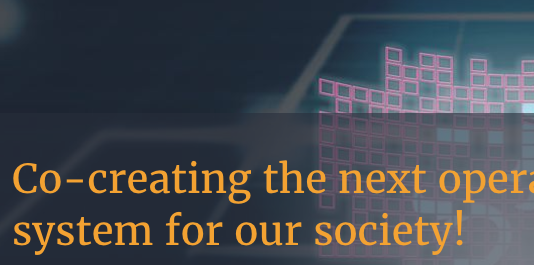
From February 10th to 12th the Dutch government will be a hosting a blockchain hackathon in Groningen. The theme is “co-creating the next operating system for our society” and the winners will get 50K in prizes to help and make their results from the hackathon concrete.
In total there will be 50 teams discussing and brainstorming how blockchain can be used by the government. For that there were pre discussed 5 different tracks that can be worked on, those are: energy, reinventing government, international trade and entrepreneurship, future of pensions and identity.
There are more than 1.000 people joining and if you have interest in discussing how any of those 5 tracks can be improved with the use of blockchain you can register here.
The post Save the date: 3 day blockchain hackathon appeared first on Seats2meet.

